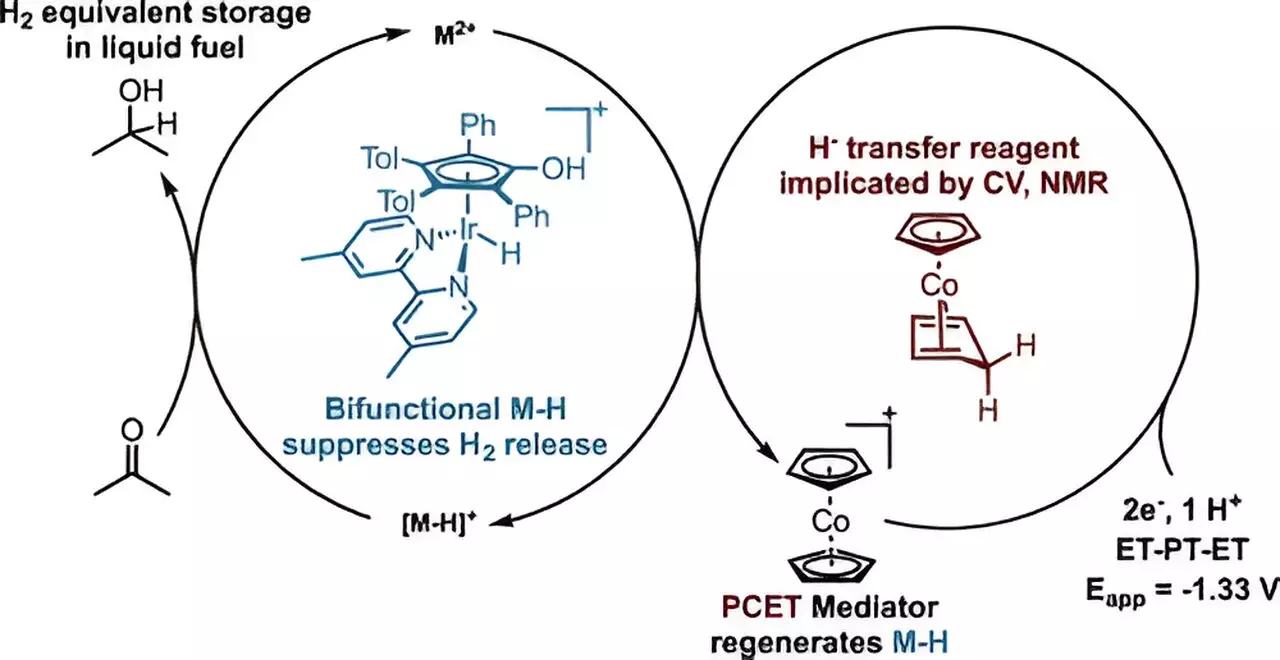California’s transition to renewable fuels presents a challenge in the form of storing power for the electric grid. The fluctuating nature of solar and wind power, which drops at night and declines in winter, poses a hurdle in maintaining a consistent energy supply. As a result, the state heavily relies on natural gas to balance out the highs and lows of renewable power generation. The inefficiency of this setup underscores the urgent need for new technologies that can store surplus energy for later use, thus reducing the dependence on fossil fuels.
Exploring Liquid Organic Hydrogen Carriers (LOHCs)
Led by Robert Waymouth, a Stanford team is at the forefront of exploring a promising technology for renewable energy storage: liquid organic hydrogen carriers (LOHCs). The concept involves converting electrical energy into liquid fuels that can be stored and transported efficiently. This innovative approach aims to address the challenges associated with storing and transporting hydrogen, making it a viable option for supplementing existing energy storage systems like lithium-ion batteries.
The Stanford team’s research focuses on utilizing isopropanol and acetone as key ingredients in hydrogen energy storage and release systems. Isopropanol, commonly known as rubbing alcohol, serves as a high-density liquid form of hydrogen that can be stored and transported through existing infrastructure. By developing a catalyst system that combines protons and electrons with acetone, the team has been able to generate isopropanol selectively without producing hydrogen gas, thus improving the efficiency of the energy storage process.
The Catalytic System and the Role of Cobaltocene
Daniel Marron, the lead author of the study, identified a breakthrough catalyst system that utilizes iridium and cobaltocene to convert protons and electrons into isopropanol without the production of hydrogen gas. The use of cobaltocene as a co-catalyst in the reaction has proven to be remarkably efficient, providing a cost-effective alternative to precious metal catalysts. This discovery opens up new possibilities for developing more affordable and scalable LOHC systems using readily available materials like cobalt.
As the research on LOHC systems continues to evolve, the potential benefits for energy storage in various sectors become increasingly apparent. From improving energy storage for industry to enhancing the efficiency of individual solar and wind farms, the application of LOHC technologies holds great promise for a sustainable energy future. The elegant simplicity of converting excess energy into isopropanol for storage and later use as electricity encapsulates the transformative potential of this innovative approach.
The development of liquid organic hydrogen carriers represents a significant step towards achieving reliable and efficient energy storage solutions for the future. By harnessing the power of catalytic systems and innovative materials like cobaltocene, researchers are paving the way for a more sustainable energy landscape that minimizes reliance on fossil fuels. As the world continues its shift towards renewable energy sources, technologies like LOHCs offer a glimpse into a cleaner and greener future.


Leave a Reply